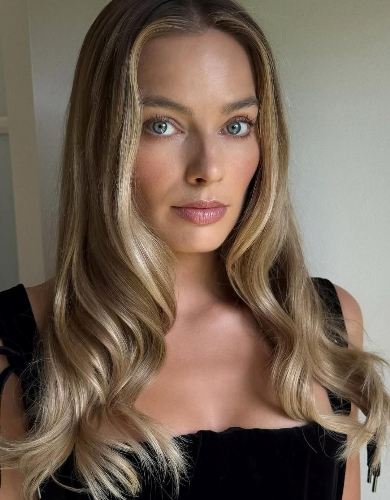
© Facebook Nur Patni
Жвава дискусія, що розгорнулася на сторінці у Facebook письменника Бориса Акуніна (Григорія Чхартишвілі), показала: у 2020-х більше не існує єдиного універсального ідеалу жіночої краси. Замість цього краса стала багатогранною, символічною і тісно пов’язаною з особистими цінностями. Якщо у ХХ столітті одне ім’я могло уособлювати цілу епоху, то сьогодні «обличчя десятиліття» відображає різні історії, культури й ідентичності.
Від Голлівуду до Netflix, від високої моди до суспільних рухів — сучасні ікони краси втілюють не досконалість, а автентичність. Зендея символізує гармонію мистецтва, розуму й активізму; Дженна Ортега — голос покоління Z; Ана де Армас уособлює латиноамериканський прорив у мейнстрімі; Марґот Роббі є образом інтелігентної класичної жіночності; Ґаль Ґадот поєднує силу з теплом; Гантер Шефер переосмислює красу поза гендером; Сідні Свіні уособлює сучасну чуттєвість; Леа Сейду — європейську витонченість і загадковість; а Дева Кассель — водночас спадкоємиця й муза нового покоління.
Обличчя 2020-х: Зендея, Дженна Ортега, Аня Тейлор-Джой, Ана де Армас, Марґот Роббі, Ґаль Ґадот, Гантер Шефер, Сідні Свіні, Леа Сейду, Дева Кассель.
Цитати з дискусії
-
Рада Ландар про Тейлор Свіфт:
«Тейлор Свіфт — ікона стилю 2020-х, бо вона втілює ідеал щирої, розумної та незалежної жінки нашого часу. Її стиль — це цілісність і гідність, а не просто мода.»
-
Наталя Рябогіна про Марґот Роббі:
«Якщо говорити про 2020-ті, то Марґот Роббі справді визначає це десятиліття. Вона відроджує класику гламурної краси, але в сучасному, самоіронічному ключі.»
-
Андрій Нікітін про Ґаль Ґадот:
«Ґаль Ґадот! Вона не лише красива — її усмішка світиться навіть через телефон. У ній є світло й людяність, якої бракує сучасному шоу-бізнесу.»
-
Олена Карарі про Ану де Армас:
«Для мене це Ана де Армас. Можливо, не канонічна краса, але її обличчя живе — справжнє, тепле, людяне. Саме це робить її незабутньою.»
-
Олександр Маслюк про Зендею:
«Зендея, звісно! Вона — символ покоління, яке переосмислює моду, кіно і саме поняття краси. Вона водночас сучасна й позачасова.»
-
Таня Мосєєва про Гантер Шефер:
«Гантер Шефер — це нова мова краси. Не про гендер, не про стандарти. Її естетика — це чутливість і сміливість бути іншою.»
-
Ольга Сапунова про Сідні Свіні:
«Зараз усі говорять про Сідні Свіні. Вона — сучасна зірка, яка поєднує відкритість, вразливість і силу. Це нове визначення класичної краси.»
-
Анна Фенко про Леа Сейду:
«А як же Леа Сейду — остання дівчина Бонда? Вона — втілення французької елегантності й загадковості. Такої краси сьогодні майже не лишилося.»
-
Любов Сінгаєвська про Деву Кассель:
«Дева, донька Моніки Беллуччі, — сучасне втілення своєї матері. Вона символізує нове покоління, яке поєднує спадщину і оновлення.»
-
Анна Велика про саму ідею краси:
«Красивих облич багато — різних рас, національностей, стилів. У 2020-х уже немає єдиного ідеалу. Тепер важливо не те, як вона виглядає, а що її образ означає.»
A Decade Without a Single Ideal: Who Defines the Face of the 2020s
A lively discussion that unfolded on the Facebook page of writer Boris Akunin (Grigory Chkhartishvili) revealed that in the 2020s, there is no longer a single universal ideal of female beauty. Instead, beauty has become multifaceted, symbolic, and deeply tied to personal values. If in the 20th century one name could define an entire era, today the “face of the decade” reflects diverse stories, cultures, and identities.
From Hollywood to Netflix, from haute couture to social movements — modern beauty icons represent not perfection, but authenticity. Zendaya embodies the harmony of art, intellect, and activism; Jenna Ortega is the voice of Generation Z; Ana de Armas symbolizes the Latin American breakthrough in the mainstream; Margot Robbie represents intelligent classical femininity; Gal Gadot merges strength with warmth; Hunter Schafer redefines beauty beyond gender; Sydney Sweeney brings contemporary sensuality; Léa Seydoux reflects European grace and mystery; and Deva Cassel — both heir and muse — symbolizes the new generational ideal.
The Faces of the 2020s: Zendaya, Jenna Ortega, Anya Taylor-Joy, Ana de Armas, Margot Robbie, Gal Gadot, Hunter Schafer, Sydney Sweeney, Léa Seydoux, Deva Cassel.
Quotes from the Discussion
-
Rada Landar on Taylor Swift:
“Taylor Swift is the style icon of the 2020s because she embodies the ideal of a sincere, intelligent, and independent woman of our time. Her style is about integrity and dignity, not just fashion.”
-
Natalya Ryabogina on Margot Robbie:
“When it comes to the 2020s, Margot Robbie truly defines the decade. She revives the classical glamour of beauty but in a modern, self-aware, and ironic way.”
-
Andrey Nikitin on Gal Gadot:
“Gal Gadot! She’s not only beautiful — her smile shines even through the phone. There’s light and humanity in her, something missing in today’s entertainment industry.”
-
Elena Karari on Ana de Armas:
“For me, it’s Ana de Armas. Perhaps not a canonical beauty, but her face feels alive — real, warm, human. That’s what makes her unforgettable.”
-
Alexander Maslyuk on Zendaya:
“Zendaya, of course! She’s the symbol of a generation that redefines fashion, cinema, and even the very concept of beauty. She’s both contemporary and timeless.”
-
Tanya Moseeva on Hunter Schafer:
“Hunter Schafer is the new language of beauty — not about gender or standards. Her aesthetic is about sensitivity and the courage to be different.”
-
Olga Sapunova on Sydney Sweeney:
“Everyone’s talking about Sydney Sweeney. She’s a modern star who combines openness, vulnerability, and strength. That’s the new definition of classic beauty.”
-
Anna Fenko on Léa Seydoux:
“What about Léa Seydoux — the last Bond girl? She’s the embodiment of French elegance and mystery. There’s almost no one like her left.”
-
Singaevskaya Liubov on Deva Cassel:
“Deva, the daughter of Monica Bellucci, is the modern reincarnation of her mother — a symbol of the new generation that blends heritage with renewal.”
-
Anna Velikaya on the very idea of beauty:
“There are so many beautiful faces — from different races, nationalities, and styles. In the 2020s, there’s no single ideal anymore. What matters is not how she looks, but what her image represents.”
224